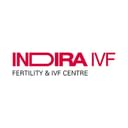In Vitro Fertilization - Quick Facts!
In vitro fertilization (IVF) is a process of fertilization in which eggs (ova) from a woman's ovary are removed. They are combined with sperm outside the body in a laboratory procedure, and then the fertilized egg (zygote) is transferred to the same or another woman’s uterus for a successful pregnancy.
IVF is one of the several assisted reproductive techniques (ART) used to help infertile couples to conceive a child.
Causes of Infertility
- Blocked fallopian tubes
- Hormonal imbalance
- Endometriosis
- Women with ovulation disorder
- Uterine fibroids
- In the man, low sperm count or poor quality sperm
- Genetic disorder
Procedures
Two procedures are done to gain access to ovaries
- It involves inserting the needle through the vagina (transvaginally). With the help of an ultrasound machine, the physician guides the needle to the location of the ovaries
- In the other procedure, called laparoscopy, a small thin tube with a viewing lens is inserted through an incision in the navel. This lets physician to see inside the patient, and locate the ovaries.
Method
Without additional techniques, the chances of pregnancy would be extremely small. The additional techniques used in IVF include-
- Ovarian hyperstimulation- Stimulation to induce development of multiple follicles of the ovaries.
- Final maturation induction- Induction of final oocyte maturation is performed, generally by an injection of human chorionic gonadotropin (HCG), when the ovarian follicles have reached a certain degree of development. This is known as the "trigger shot”
- Egg and sperm preparation- Semen is prepared for fertilization by removing inactive cells and seminal fluid in a process called sperm washing. An oocyte selection may be performed prior to fertilization to select eggs with optimal chances of successful pregnancy.
- Co-incubation- Eggs are removed from the woman and placed in one of the fallopian tubes, along with the man's sperm. This allows fertilization to take place inside the woman's body. Therefore, this variation is actually an in vivo fertilization, not in vitro.
- Embryo culture- The main durations of embryo culture are until cleavage stage (day two to four after co-incubation) or the blastocyst stage (day five or six after co-incubation)
- Embryo transfer- The number to be transferred depends on the number available, the age of the woman and other health and diagnostic factors. Embryos are transferred to the patient's uterus through a thin, plastic catheter, which goes through her vagina and cervix.
Aftercare
After the IVF procedure is performed the woman can resume normal activities. A pregnancy test can be done approximately 12-14 days later to determine if the procedure was successful.
Risks
- Multiple pregnancies
- Ectopic pregnancy
- Ovarian rupture, bleeding
- Infections
- Complications of anesthesia



+1.svg)
